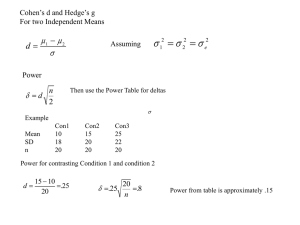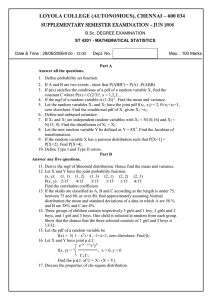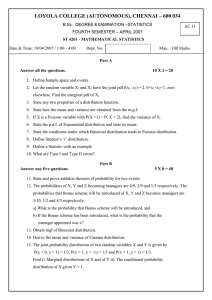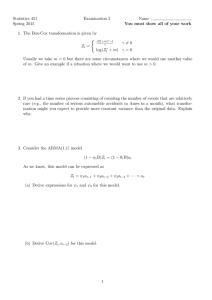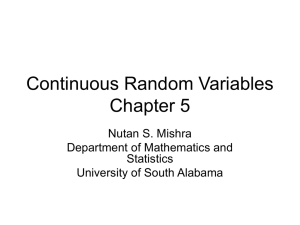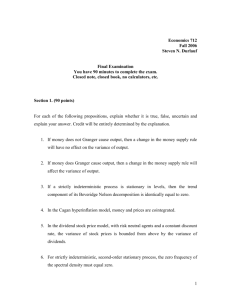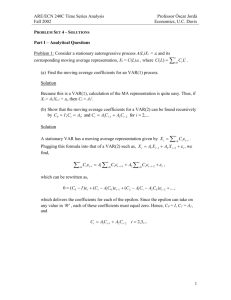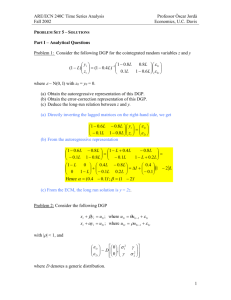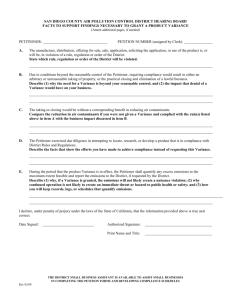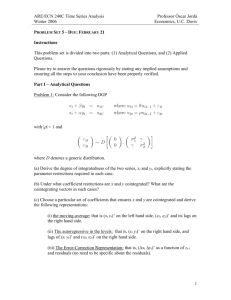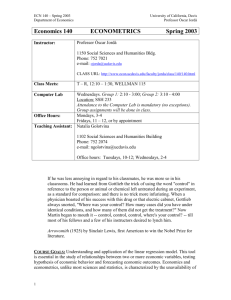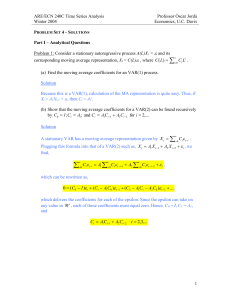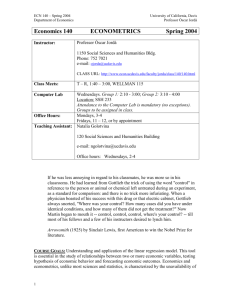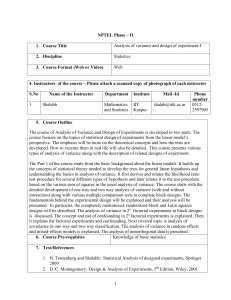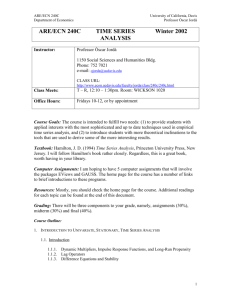PROBLEM SET 1 – DUE: JANUARY 22
advertisement
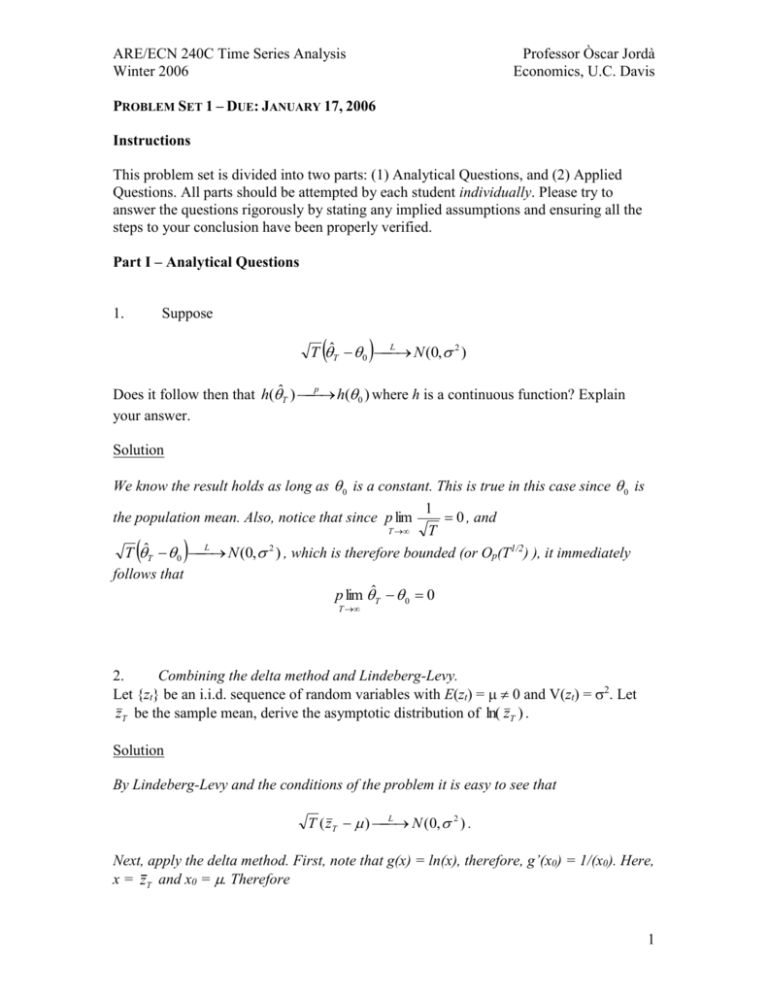
ARE/ECN 240C Time Series Analysis
Winter 2006
Professor Òscar Jordà
Economics, U.C. Davis
PROBLEM SET 1 – DUE: JANUARY 17, 2006
Instructions
This problem set is divided into two parts: (1) Analytical Questions, and (2) Applied
Questions. All parts should be attempted by each student individually. Please try to
answer the questions rigorously by stating any implied assumptions and ensuring all the
steps to your conclusion have been properly verified.
Part I – Analytical Questions
1.
Suppose
L
T ˆT 0
N (0, 2 )
p
Does it follow then that h(ˆT )
h(0 ) where h is a continuous function? Explain
your answer.
Solution
We know the result holds as long as 0 is a constant. This is true in this case since 0 is
1
the population mean. Also, notice that since p lim
0 , and
T
T
L
T ˆT 0
N (0, 2 ) , which is therefore bounded (or Op(T1/2) ), it immediately
follows that
p lim ˆT 0 0
T
2.
Combining the delta method and Lindeberg-Levy.
Let {zt} be an i.i.d. sequence of random variables with E(zt) = 0 and V(zt) = 2. Let
zT be the sample mean, derive the asymptotic distribution of ln( zT ) .
Solution
By Lindeberg-Levy and the conditions of the problem it is easy to see that
L
T ( zT )
N (0, 2 ) .
Next, apply the delta method. First, note that g(x) = ln(x), therefore, g’(x0) = 1/(x0). Here,
x = zT and x0 = . Therefore
1
ARE/ECN 240C Time Series Analysis
Winter 2006
Professor Òscar Jordà
Economics, U.C. Davis
2
L
T ln( zT ) ln( )
N 0, 2
iid
3.
Calculate the variance of the process yt yt 1 t where t ~ (0, 2 ) . Hence,
show that it is not stationary.
Solution
Notice that each element in the sequence {yt} is just the sum of all past innovations, i.e.
t
yt s
s 0
and therefore V ( yt ) 0 2 t 2 (by the independence of the ). Hence, as t grows so
t
does the variance of y. Because the variance is a function of time, we have shown that the
process is non-stationary.
4.
P
Suppose X T
1
P
and YT
Y where Y ~ N(0, 2). Derive the limiting
distribution of XTYT. Hence derive the distribution of (XTYT )2 . Be explicit about your
assumptions.
Solution
We know that convergence in probability implies convergence in distribution. Also from
P
L
L
Slutsky’s theorem we know that if X T
c and YT
Y then X T YT
cY .
Y
~ N (0,1) . Finally, note that the square of a
Since Y is normally distributed, then
N(0,1) random variable is distributed chi-square and hence, X T YY 12
2
5.
d
Does a martingale difference sequence have to be covariance stationary? Explain.
Solution
No, the variance could be a function of time.
2
